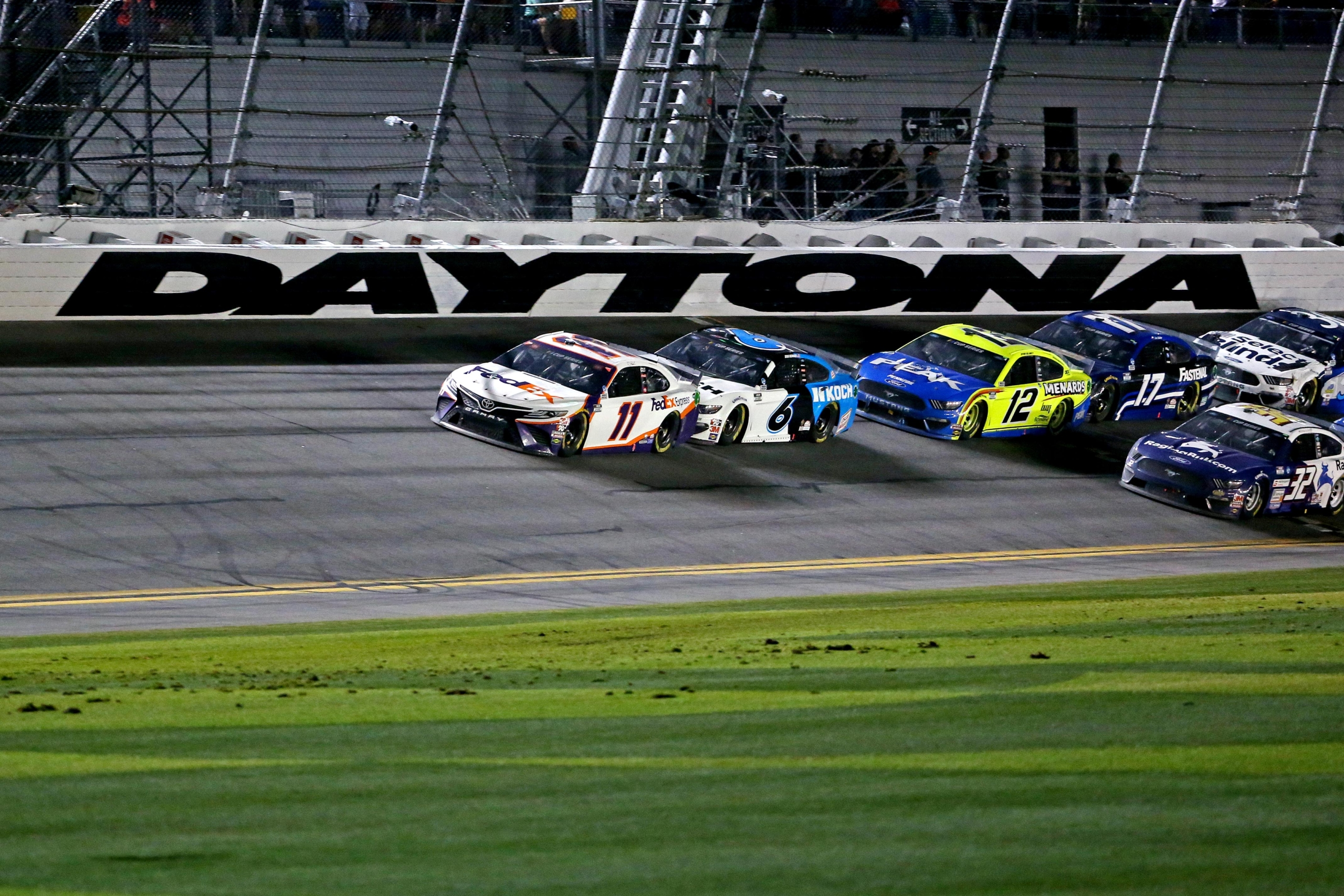The Daytona 500 is the biggest event of the NASCAR season and there is no better race to win as a driver. Find out how long the Daytona 500 is in laps, miles, kilometers, and more below.
How many kilometers is the Daytona 500?
The Daytona 500 is an 805-kilometer NASCAR Cup Series race that is run in Daytona Beach, Florida. It marks the first points-paying race of the NASCAR season due to the Busch Light Clash being an exhibition event.
How many miles is the Daytona 500?
The Daytona 500 is a 500-mile event that takes place as NASCAR’s first points race of the season every February. The event is commonly called “NASCAR’s Super Bowl” as it is the biggest event that race fans will see over the course of the season.
How many laps is the Daytona 500?
The Great American Race has 200 laps around the 2.5-mile track located in Daytona Beach, Florida. NASCAR breaks the event into three different segments, known as stages, and awards playoff and stage points at the end of each segment.
Daytona 500 winners, results, and facts
What are the Daytona 500 stages?
The 2023 Daytona 500 will feature the following stage lengths:
- Stage 1: 65 laps
- Stage 2: 65 laps
- Final Stage: 70 laps
This is the same structure as last year’s event.
What is the longest Daytona 500?
The longest Daytona 500 took place during the 2020 season. The event went into overtime and ended up finishing at 209 laps. This equals 522.5 miles overall. This is also the race that saw the infamous Ryan Newman crash on the front stretch. Newman ended up being cleared to compete in NASCAR events a few weeks later.
What is the fastest-ever lap in Daytona 500 qualifying?
The fastest-ever lap completed in qualifying for the Great American Race took place in 1987 with Bill Elliott’s blazing 42.782-second lap time. This equals out to an average speed of 210.364 miles per hour, which is unheard of in NASCAR nowadays.
What is the average distance for a NASCAR race?
The average distance for a NASCAR race is 400 miles as it represents the most common mile count for an event. Sometimes, a race will be scheduled to go 500 or 600 miles if it is a major event. NASCAR typically has shorter race distances for short tracks and road courses.
Related: How to watch the Daytona 500 – Live streaming and TV listings
What is the longest race in the NASCAR Cup Series season?
The Coca-Cola 600 is the longest race of the NASCAR Cup Series season. There are several races that are 500 miles, such as the Great American Race and Southern 500, but the Coca-Cola 600 is the only race to feature four stages and 600 miles.
Daytona 500 vs. Indianapolis 500: Which 500 is the best race?
The Daytona 500 and Indianapolis 500 are the biggest races held across the United States of America each year. NASCAR is responsible for the Great American Race while the NTT IndyCar Series holds the Indianapolis 500.
Since the two major racing events are each 500 miles, which event is the best race? First, let’s look at the details of the Indianapolis 500.
The event is the same distance as the Daytona 500 at 500 miles and 805 kilometers. It also features the same overall lap count of 200 laps. The only difference is the NTT IndyCar Series does not have stage breaks.
Therefore, it comes down to which event is more prestigious and has the best overall racing. Due to the popularity and draw of the Indianapolis 500, it has the edge in this debate moving forward and it will likely never change.
When a driver wins the Indianapolis 500, their name is sketched in racing history. While the same can be said about the Daytona 500, it is just not at the same level. That does not mean it is not the biggest victory a driver can achieve in NASCAR.

